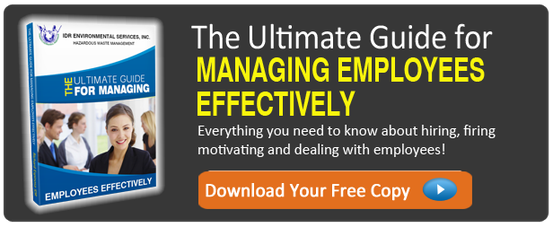As an employer, your primary responsibility to your employees is to provide them with a safe working environment. Most companies and organizations assume this to mean that they should keep the workplace free of hazards/other possibly unsafe conditions which could cause an accident that results in a job-related injury.
In general, this is accurate, but it doesn't completely address the level of responsibility you have for the care and well-being of your staff.
What many employers overlook, some until it's too late, is that "accidents" aren't the only threat to workplace safety. Work-related violence is on the rise, placing workplace violence prevention at the forefront of your risk-management responsibilities. It is crucial that employers learn how to prevent violence in the workplace as part of their human resource strategies.
Ensuring workplace safety is an essential part of running any business operation. Aside from the obvious need to protect your workers from illness, injury or, in a worst-case scenario, death, you'd rather not have to deal with the financial cost and administrative burden normally associated with a worker's compensation claim and/or OSHA investigation. An effective workplace violence prevention program is, therefore, essential to the survival of any enterprise.
Before we address some specific recommendations, let's acknowledge that a perfect program is unattainable: There is no way to guarantee that a workplace can be 100% free from violence. It's impossible to monitor every workplace relationship, much less each interaction.
A disagreement can escalate into a violent confrontation in the blink of an eye (actual physical conduct isn't necessary; simply a threat constitutes workplace violence for our purposes). It is possible, however, to minimize the potential for a physical response to a conflict between employees (or, for that matter, between an employee and a customer, vendor, or simply a visitor).
Here, then, are some components critical to a comprehensive, effective workplace violence prevention program:
Don't Let The Past Become Your Present
Just as companies perform due diligence before they merge, you should thoroughly perform background checks and validate the references of any potential employee before you bring him/her into the fold. A worker with "anger issues" is likely to demonstrate those eventually. Pre-employment screening, may be expensive, but it's cheaper than hiring an employee with violent tendencies.
Identify The Risk Factors
 There are many factors that can create an environment conducive to violence. Generally speaking, any job location, duty or incident that increases worker stress can be a catalyst for violence (e.g. high-crime area, job that involves money management, constant interaction with the public, employee works in a remote location, etc.).
There are many factors that can create an environment conducive to violence. Generally speaking, any job location, duty or incident that increases worker stress can be a catalyst for violence (e.g. high-crime area, job that involves money management, constant interaction with the public, employee works in a remote location, etc.).
Conduct a detailed workplace analysis to determine how many risk factors are present. Develop a Workplace Violence Inspection Checklist. It may not be possible to change most of these circumstances; however, if one or more are present, heightened awareness of the potential for problems is crucial.
Have A Plan
A workplace violence prevention program requires planning, lots of it. Implement a detailed written plan that states your company's goals, objectives, requirements and, of course, consequences for noncompliance. Deterrence is one of the most effective weapons against workplace violence and clearly identifying repercussions for unacceptable conduct will go a long way towards preventing its occurrence.
Training
Ensure that supervisors/managers are fully equipped to assess workplace interactions and trained to employ effective communications skills designed to defuse a contentious situation. Human beings engage in human behavior. Management should be empowered to acknowledge that emotions can and do enter the workplace and be trained on how to respond accordingly.
There are numerous resources (Labor Board and Cal Berkley, to name two) available to assist your organization in its workplace violence prevention efforts. Use them. You truly can't afford not to.


Comment